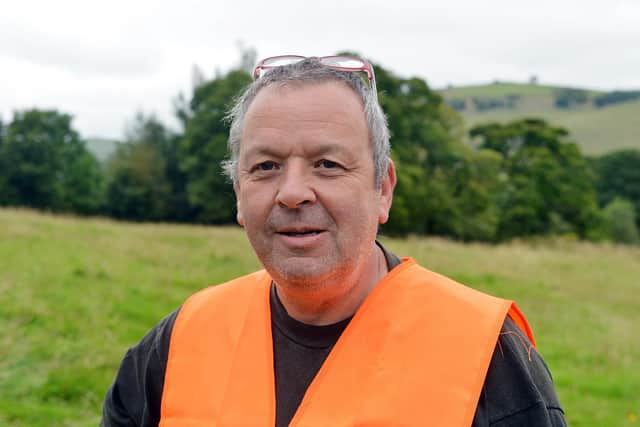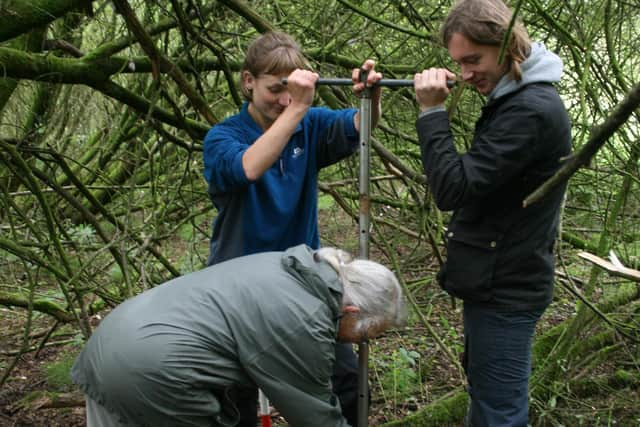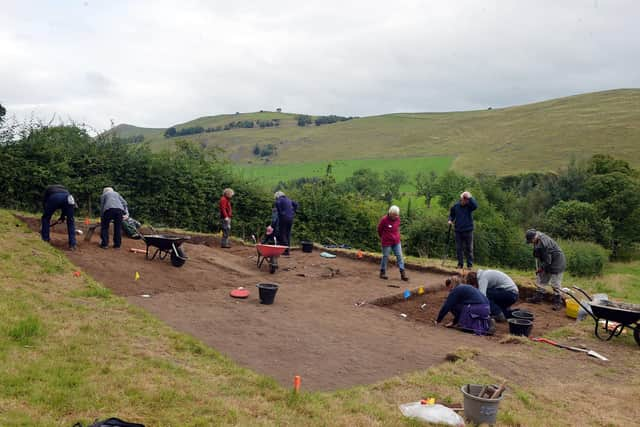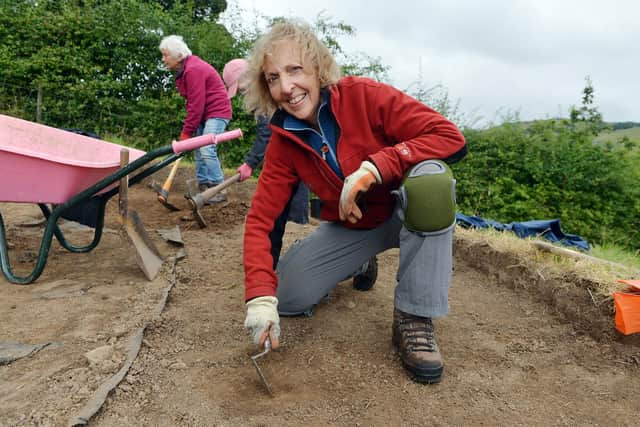'This is really exciting news' - Discoveries made at a Peak District archeologist site are of national importance
and live on Freeview channel 276
In the summer of 2021 a team of archaeologists and volunteers returned to Under Whittle in Longnor to continue looking for clues about medieval civilisation.
The findings have now been examined and published which show the site is much older than previously thought.
Advertisement
Advertisement
A new bog was discovered dating back 3,000 years and it provided a timeline of events which showed trees were felled and the crop rye was harvested on the land.


Dr Ian Parker Heath who led the dig said: “This is the first firm evidence we have found which shows Saxons in the valley. So this is really exciting news.
“Originally we thought the land was first used in the medieval period but the carbon dating from geo-archaeologists shows there had been civilisation in this part of the country hundreds and hundreds of years before we first thought.
“The findings are of national importance and set a gold standard for what other digs up and down the country can achieve.”
Advertisement
The group being on the site goes back to 2015 when the Tudor Farming Interpretation Group (TFIG) began their search for what they believed to be the site of a medieval house.


Advertisement
Among the things their excavations in 2016 revealed was some pieces of medieval pottery and some charcoal.
No house was found, but the charcoal was dated to 1350 AD, when Edward III was king in the medieval period. So, the group returned to excavate again last year.
One of the main elements of the Digging Deeper, the next phase of the project, was to find out more about the past environment at Under Whitle.
Advertisement
To do this two specialists joined the team - Ellen Simmons from the University of Sheffield who was looking at charred plant remains and Dr Tudur Davies, a Landscape and environment archaeologist who carried out surveys and sampling looking for clues about the environment, particularly pollen.


Dr Parker Heath said: “Ellen’s work used samples from excavated areas to establish the presence of charred plant remains which then end with the rubbish and become part of the archaeological record.
“Sadly for us there were very few charred grains found.”
Advertisement
Dr Parker Heath says Dr Davies work on the other hand was much more helpful.
He said: “He looked at previous work in the area such as surveys, excavations and notes/reports from our project and an earlier walkover survey noted several wet areas and these formed part of his work.”


Advertisement
One of these areas proved to be a peat bog on the side of the valley which was completely unknown. This became the team’s prime area of interest.
Dr Parker Heath said: “It turned out to be rather special. It was around 25m in diameter and over 1.6m deep and was rich in organic matter. This meant it could be used for both radiocarbon dating and pollen analysis.”
The radiocarbon dating showed the bog began to be formed around 1100BC, that is in the late Bronze Age – quite a surprise for the team.
Advertisement
Dr Davies found in the bog there were three zones of growth and increased pollen levels. The first of these was dated to between around 875 AD and 1050 AD.
Advertisement
The pollen samples showed that 65per cent of the pollen was not from trees but cereal-type pollen.
The most distinctive was rye and this was found at the lowest level, meaning that in the mid-late 9th century people were growing crops at Under Whitle.
The second zone showed a gradual decrease in the woodland species and increase in cereal pollen and weeds.
The third zone showed the amount of woodland pollen down to just 18 per cent of the total pollen from the area.
Advertisement
Advertisement
Dr Davies said: “It is very rare to be able to investigate the pollen signature of an area undertaking such intensive arable practice and allows an exceptional opportunity to examine the response of a local community to environmental and cultural factors during the medieval period.”
While the bog has produced an unprecedented record of the intensive character of farming over almost 800 years, Dr Davies believes there is potential for even more to be found out and closer scrutiny of the samples could reveal a pollen sequence almost decade by decade for the medieval period.
Meanwhile members of the TFIG found records of the people who lived in the area. Previously the furthest back date was 1405 but new research shows a legal transfer of land to Peter and Alice de Whitul dated 1200-1225.
Elspeth Walker, the landowner where the dig took place said: “The TFIG who have been investigating the origins of Whitle in Sheen, through history and archaeological research, were thrilled to discover that Whitle goes back further than we had ever imagined.
Advertisement
“Perhaps we shouldn’t have been too surprised though given the manor of Sheen that included the area of Whitle, was in the Domesday book! However, that was 200 years later than these recent discoveries.”
Advertisement
Catherine Parker Heath, community and conservation archaeologist with the Peak District National Park Authority, also praised teh volunteers. She said: “Community Groups like the TFIG are the driving force behind many archaeology and history projects and they, alongside the volunteers that take part, are vital to ensuring that such important archaeology is discovered and understood. Without them, these projects would just not happen.”
Dr Parker Heath added: “To some finding cereals may not be that exciting and not the treasure normally associated with archaeology but for us we have a treasure trove of information.
“We have found evidence of life hundreds of years before we thought people were living in this area and this changes everything we know.
Advertisement
“The work at Under Whittle is an unfinished story which we want to continue exploring.”